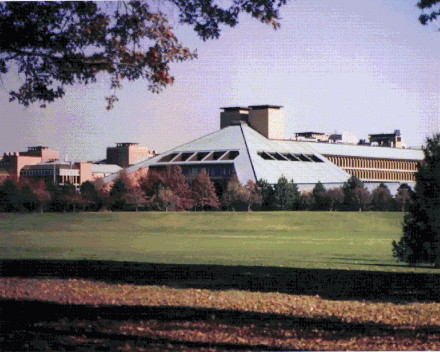 Technology
Technology
 Telecom
Telecom
 Bell Laboratories
Bell Laboratories
Don's Home
 Technology
Technology
 Telecom
Telecom
 Bell Laboratories Bell Laboratories
|
| |
 Bell Laboratories (Bell Labs) was one of the most prestigious R&D organizations in the 20th century with 7 Nobel Prizes.
Bell Laboratories (Bell Labs) was one of the most prestigious R&D organizations in the 20th century with 7 Nobel Prizes.Researchers working at Bell Labs are credited with the development of radio astronomy, the transistor, the photovoltaic cell- the charge-coupled device (CCD), information theory, Telstar (The first communications satelite), the Unix operating system, and the programming languages C, C++, TDMA and CDMA digital cellular technology which allowed frequency reuse for expanded mobile phone use, DNA machine prototypes and much more. They were pioners in perfecting radar during WWII.
How much of your smart phone is built on Bell Labs innovations?
History:
In the 1980's competition put a priority on profitability and innovation was de-emphasized. Labs that couldn't show how research could help the bottom line were downsized. Universities who would take researchers in a given disipline were given their lab equipment.
Perhaps the most fundamental difference between the old and new Bell Labs was that its focus had become more constrained. In 1995, a Bell Labs researcher named Andrew Odlyzko, who worked as a manager in the mathematics department, circulated a paper he had written that considered what was happening to American technology and, in effect, the world of Bell Labs. Odlyzko pointed out that while it was easy to blame the narrowing ambitions on shortsighted management that aimed to turn a buck more quickly, the actual forces involved were somewhat more complex. “Unfettered research,” as Odlyzko termed it, was no longer a logical or necessary investment for a company. For one thing, it took far too long for an actual breakthrough to pay off as a commercial innovation—if it ever did. For another, the base of science was now so broad, thanks to work in academia as well as old industrial laboratories such as Bell Labs, that a company could profit merely by pursuing an incremental strategy rather than a game-changing discovery or invention. In 1996, AT&T spun off Bell Laboratories, along with most of its equipment manufacturing business, into a new company named Lucent Technologies.
9 Nobel Prizes thru 2019 including:
Bell Laboratories was, and is, regarded by many as the premier research facility of its type. In 2012 I sat next to Jonathan Piel, retired editor in chief of Scientific American, at a genealogy meeting he attended with his wife in New York. Turns out we were doing something similar in 1981-83 when I was at Bell Labs/AT&T working on producing documents in electronic form, before the Internet and he was involved in a similar project at Scientific American. We were lamenting the loss of what he called one of Americas three great research institutions Bell Labs (7 Nobel Prizes/ 13 people) which has seen continuous downsizing since AT&T was broken up in 1984. So much for competition. In 2006 Lucent merged with Alcatel and was headquartered in Paris. They moved the Bell Labs sign which had stood for 80+ years in front of 600 Mountain Ave., Murray Hill, NJ where the transistor and lasers were invented and proof of the Big Bang was discovered to a side entrance. In 2016 Nokia acquired Alcatel-Lucent. Piel said all that is left of the great institutions know for pure research are MIT and Cal Tech.
Links:
|